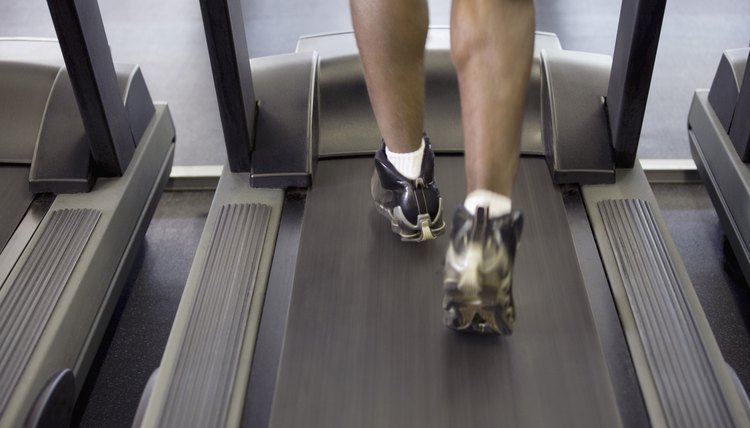Why Do I Feel Strange After Getting Off a Treadmill?

Even though your heart and head may feel fine during a treadmill session, when you exit the treadmill you may experience a feeling of dizziness or confusion. If you have these or similar symptoms, a number of conditions could be to blame, most of which are not serious. To determine whether your strange feelings are cause for concern, evaluate your symptoms and seek professional medical advice if needed.
Blood Pressure Changes
When you exercise, your blood pressure may increase slightly because your heart has to work harder to pump blood through your tissues. Over time, this is to your advantage. As your heart muscle becomes stronger, your blood pressure lowers, which can help you maintain good health. While it’s normal to have some slight fluctuations in blood pressure, a severe drop can signal a more serious condition, such as a heart or endocrine problem. If you have had plenty of water to drink and your symptoms continue even when you reduce your treadmill speed, seek a physician’s evaluation to ensure an underlying cause may not be to blame.
Dehydration/Lack of Fuel
If you have engaged in a particularly strenuous and sweat-soaking treadmill workout, lack of water or fuel could lead you to feel weak or dizzy after you get off the treadmill. Other symptoms include fever, vomiting or diarrhea after exercise. If you have a complicating condition like diabetes or hypoglycemia, this can be especially true. To see if lack of food or water could be to blame, drink a glass of water before, during and after your exercise routine. Try a 200-calorie snack at least one hour before exercise -- examples include peanut butter on a small bagel, yogurt with fruit, or a small bowl of cereal and milk.
Positional Dizziness
When you walk on a treadmill, your body perceives that it is moving, yet you are not actually going anywhere. This can be problematic when you step off the treadmill because your brain may continue to act as if you are moving forward, yet you are standing still. This change in positioning can lead to dizziness or motion sickness. You are more likely to experience this if you do not cool down or if you walk to the point of stopping when you exercise.
Solution: Motion Sickness
To correct position-related dizziness, gradually slow the speed of your treadmill to a very slow walk before exiting the treadmill. This should help your body re-acquaint itself to your position. Another solution is to focus on something in front of you that is in the distance instead of the moving treadmill belt. Looking at a magazine or the treadmill monitor can help you experience relief from treadmill-related motion sickness.
Treadmill Physics
On the treadmill, you grow accustomed to the floor moving beneath your feet to meet your steps. This changes your stride, as you experience less resistance during the push-off phase. Once you step back onto solid ground, the floor becomes still. This can be disorienting as your feet re-accustom themselves to walking as usual again.
References
- American College of Sports Medicine: ExercisingYour Way to Lower Blood Pressure
- MedlinePlus; Motion Sickness; December 2010
- MacDonald JR. Potential causes, mechanisms, and implications of post exercise hypotension. J Hum Hypertens. 2002;16(4):225-36. doi:10.1038/sj/jhh/1001377
- MedlinePlus. Dizziness. Updated May 13, 2019.
Writer Bio
Rachel Nall began writing in 2003. She is a former managing editor for custom health publications, including physician journals. She has written for The Associated Press and "Jezebel," "Charleston," "Chatter" and "Reach" magazines. Nall is currently pursuing her Bachelor of Science in Nursing at the University of Tennessee.
